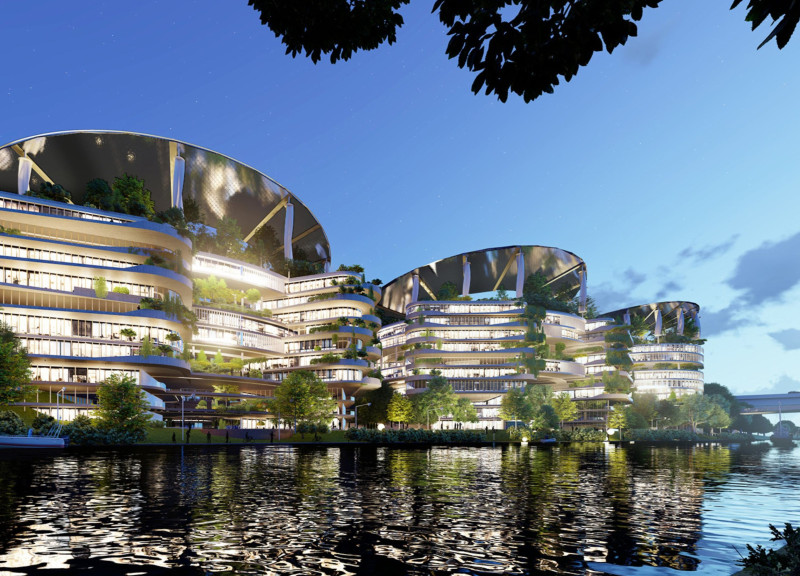5 key facts about this project
At the heart of the project is a clear vision that emphasizes sustainability and community interaction. The design team has embraced an approach that prioritizes eco-friendly materials and energy-efficient systems, culminating in a structure that is not only visually appealing but also responsible in its ecological footprint. The project's foundation rests on principles that recognize the importance of minimizing environmental impact while maximizing user comfort and engagement.
Key components of the project include spacious communal areas designed to foster social interactions and a sense of belonging among occupants. These spaces blend seamlessly with private areas, offering a balance between community and individual needs. The layout has been carefully considered, allowing natural light to penetrate deep into the structure, creating inviting atmospheres throughout the interior. Large windows and open floor plans enhance this connection to the outdoors, thereby enriching the user experience while promoting energy efficiency through passive heating and cooling strategies.
Materiality plays a significant role in this architectural design, with a deliberate selection of resources that speak to both durability and aesthetic value. The project utilizes a combination of locally sourced brick, sustainably harvested timber, and high-performance glass. The use of these materials not only supports local economies but also reduces transportation emissions, aligning with the overarching sustainability goals of the design. The chosen materials exhibit a harmonious palette that resonates with the surrounding landscape, providing a sense of continuity between the built environment and nature.
Several unique design approaches are evident throughout the project. One notable aspect is the incorporation of green roofs and living walls, which are strategically implemented to enhance biodiversity, improve air quality, and contribute to the overall aesthetics of the structure. These features serve not only as functional elements for insulation and stormwater management but also as visual focal points that connect the building with its environment. Furthermore, solar panels are seamlessly integrated into the overall design, highlighting the project’s commitment to renewable energy and reducing reliance on non-sustainable sources.
The flow of the space is another critical element that has been meticulously crafted. The layout invites exploration, with pathways guiding users through a journey that reveals various communal and private spaces. The design emphasizes transparency, allowing insights into different functions within the building while creating a sense of openness. This approach encourages collaboration and interaction among users, which is particularly beneficial in a community-focused environment.
As for the distinctive elements of this architectural endeavor, the project showcases a harmonious blend of traditional and modern design methodologies. The geometric clarity of the structure is softened by organic elements that mimic natural forms, illustrating a deep respect for the surrounding landscape. Moreover, the careful consideration of acoustic privacy and thermal comfort ensures a welcoming environment conducive to various activities.
In summary, the architectural project illustrates a comprehensive approach to design that integrates sustainability, community spirit, and aesthetic consideration. Its thoughtful material choices and innovative strategies position it as an exemplary model of contemporary architecture. Readers are encouraged to explore architectural plans, sections, designs, and ideas referenced throughout this analysis for a deeper understanding of the project's impact and execution. This exploration will yield insights into the complexities of architectural practice and the thoughtful decisions that shape the built environment.























